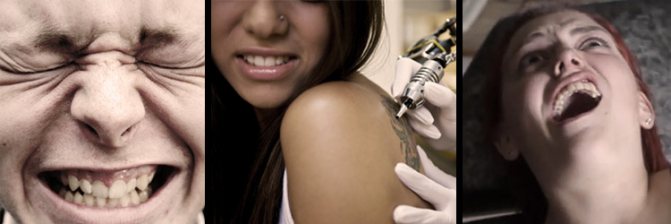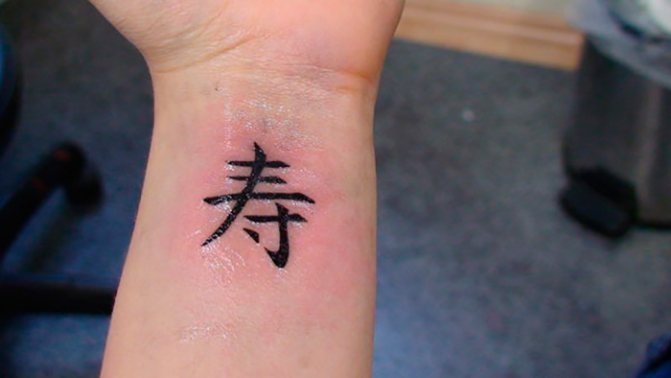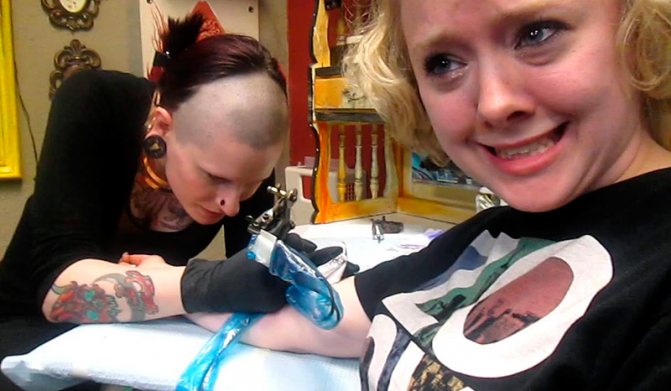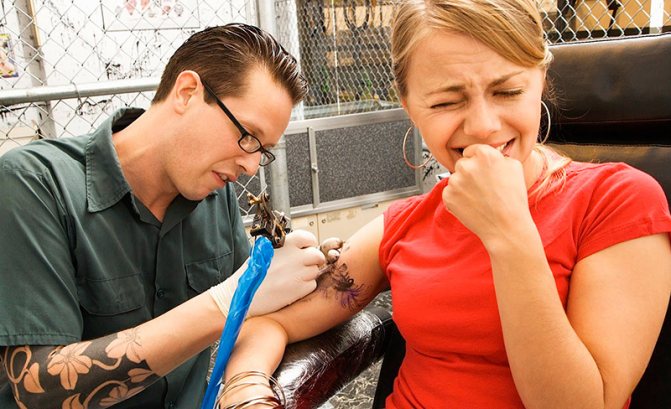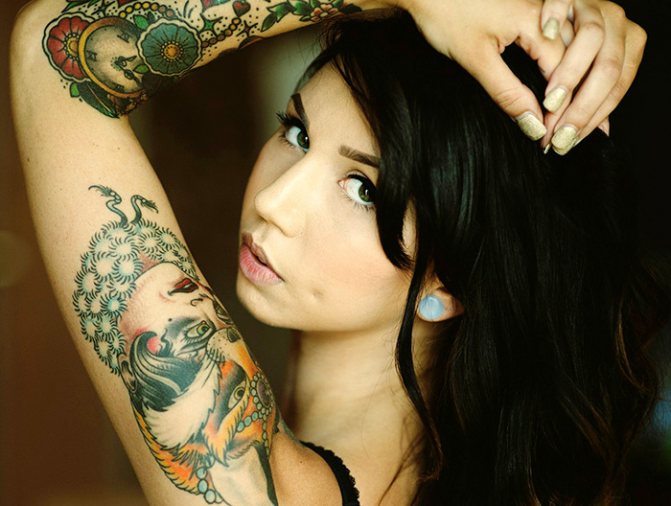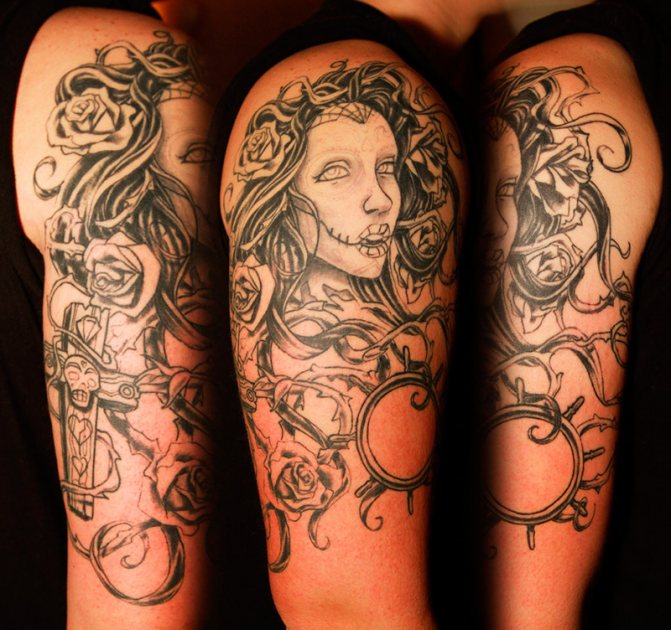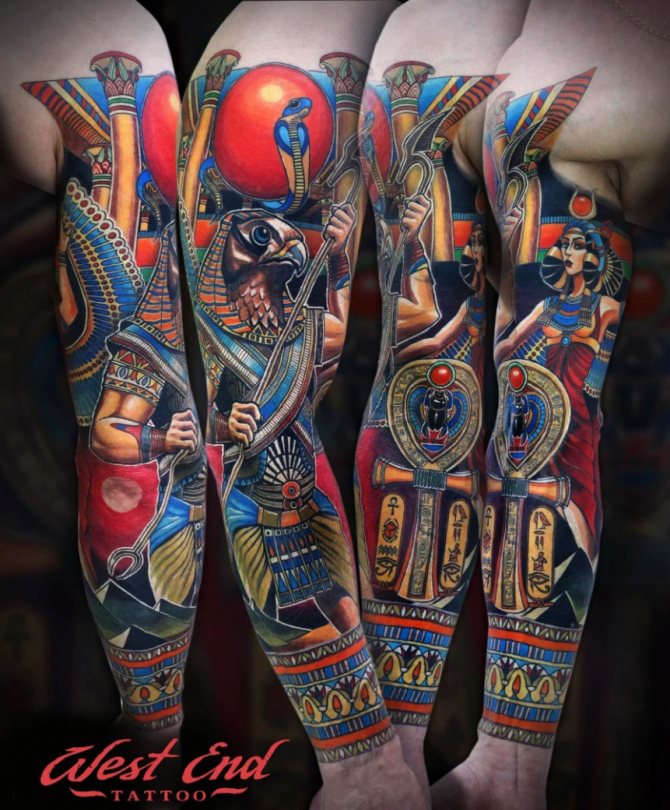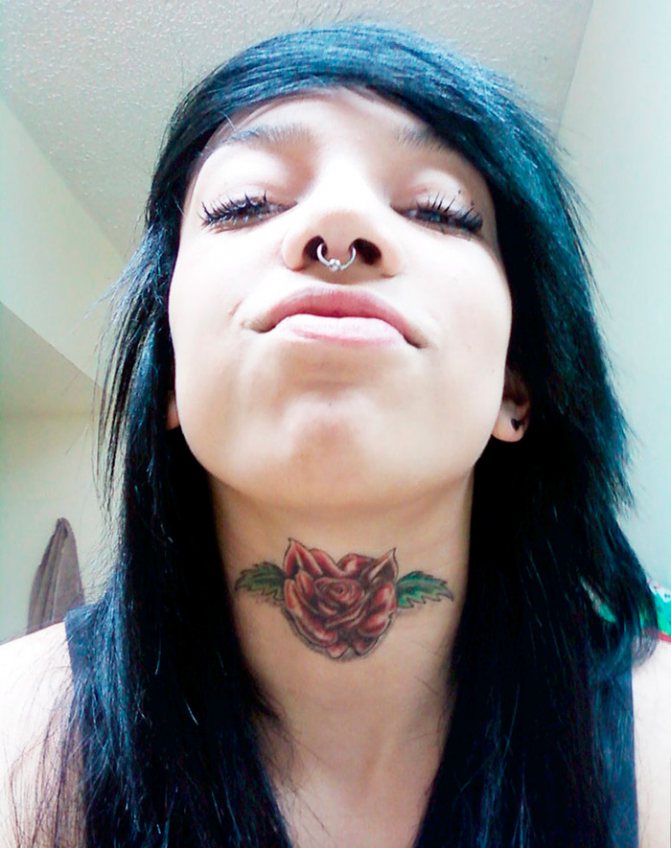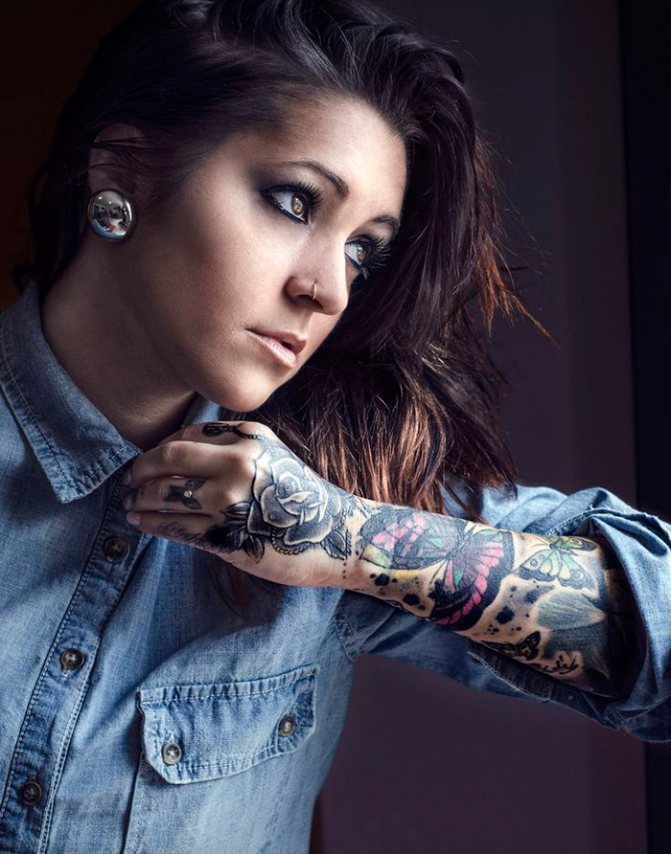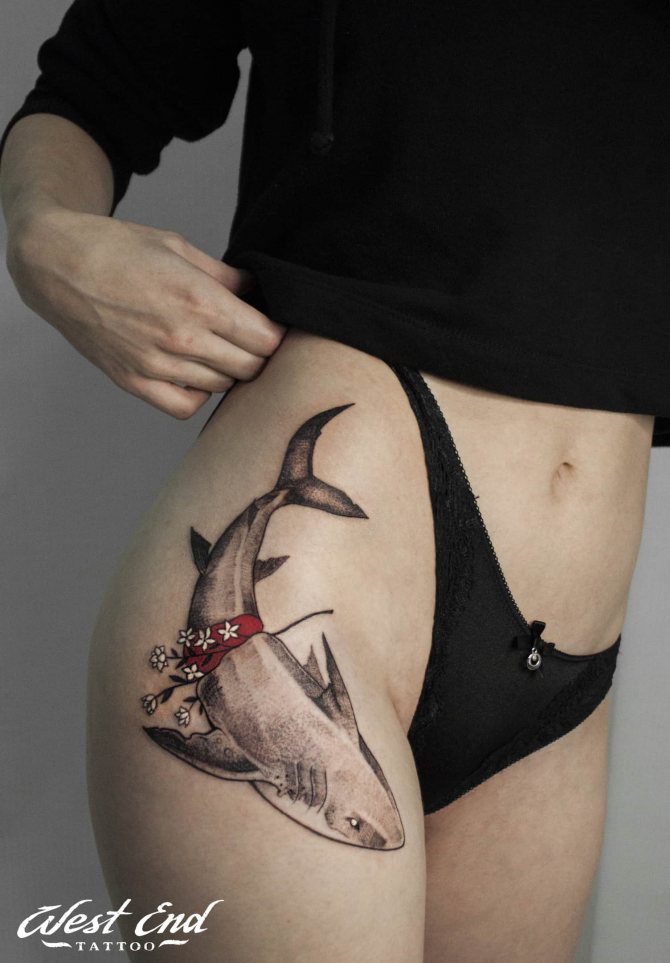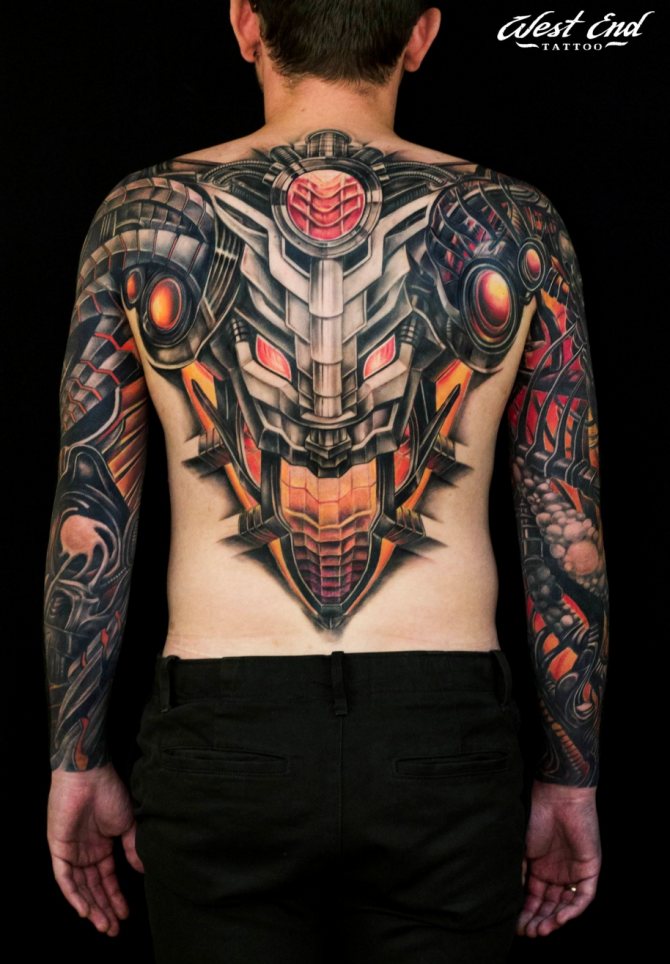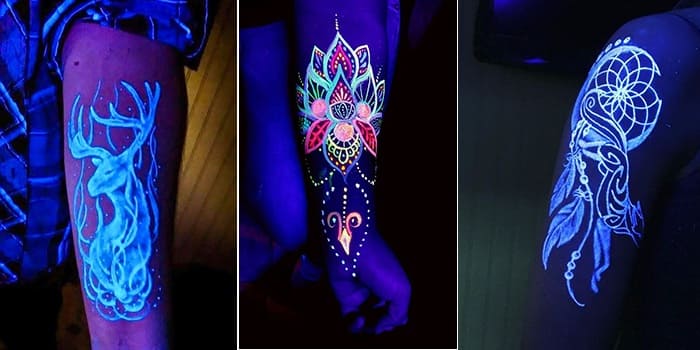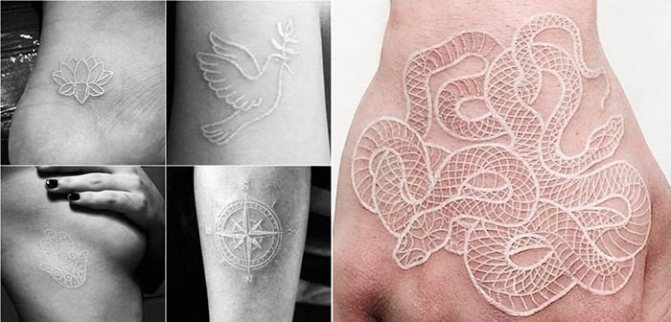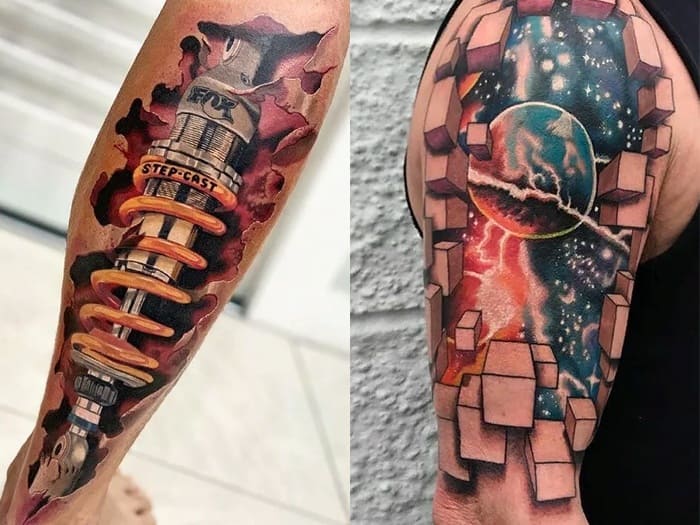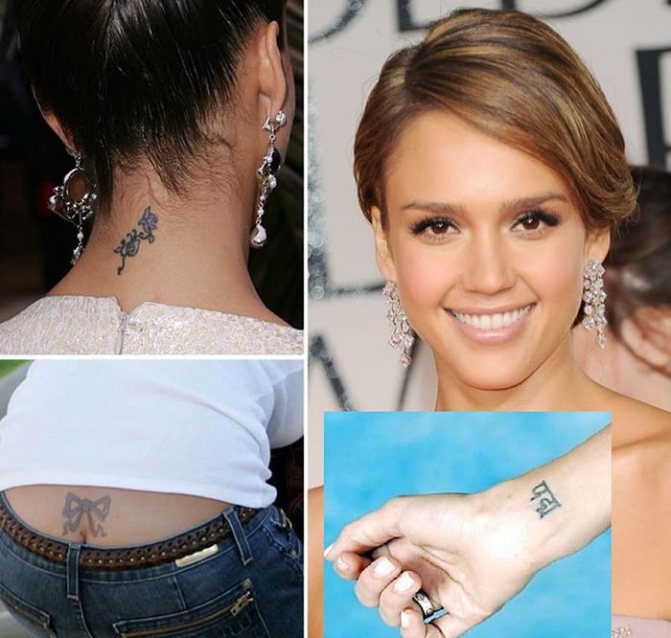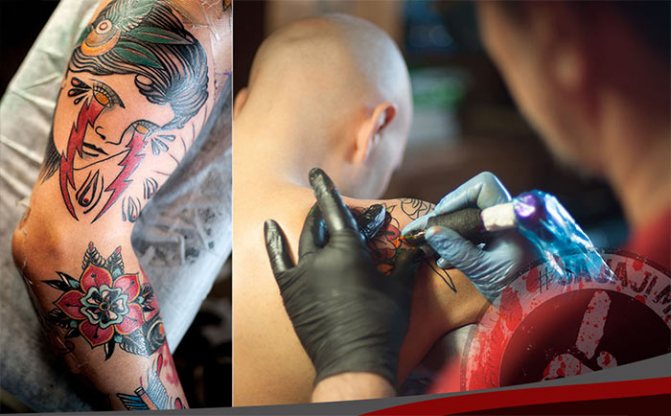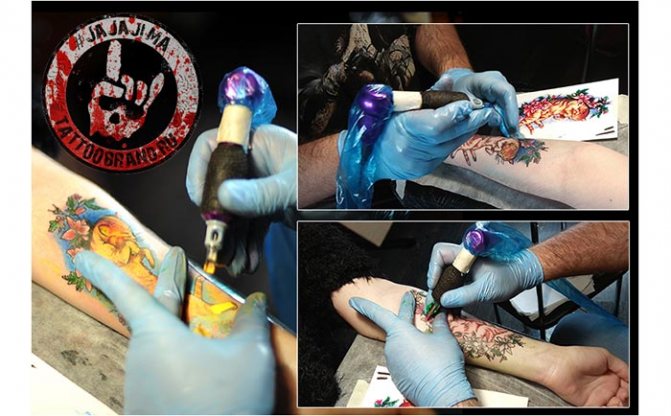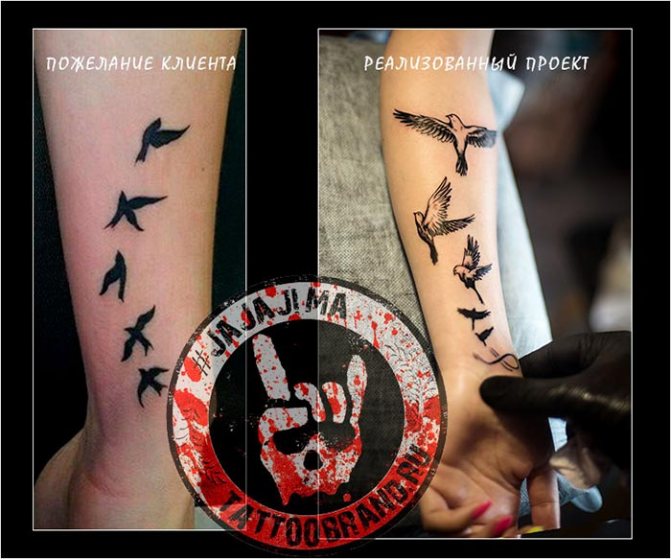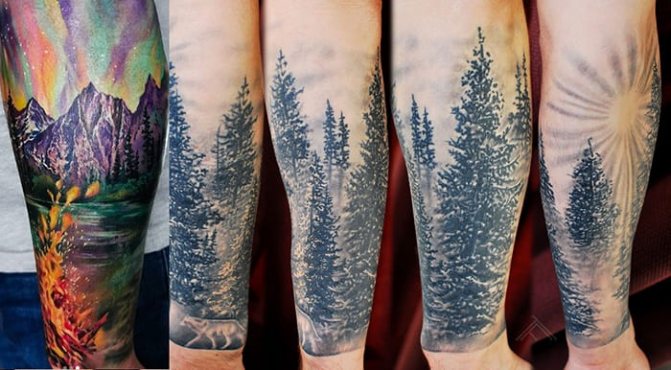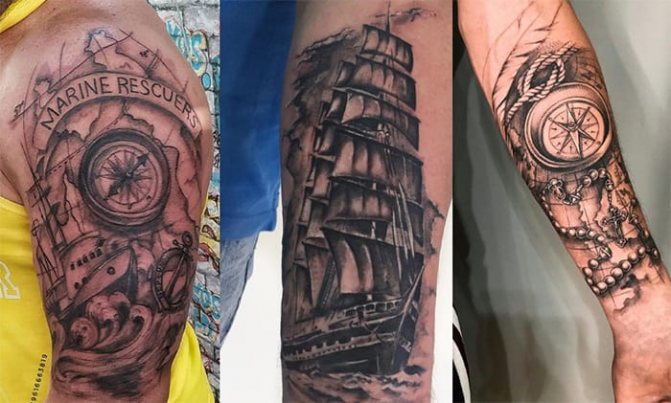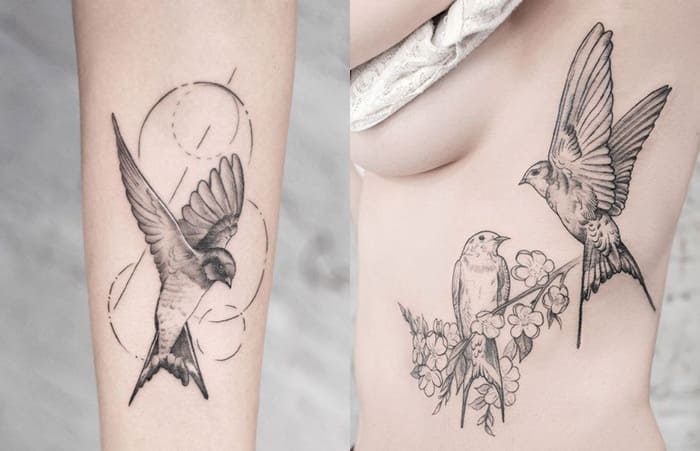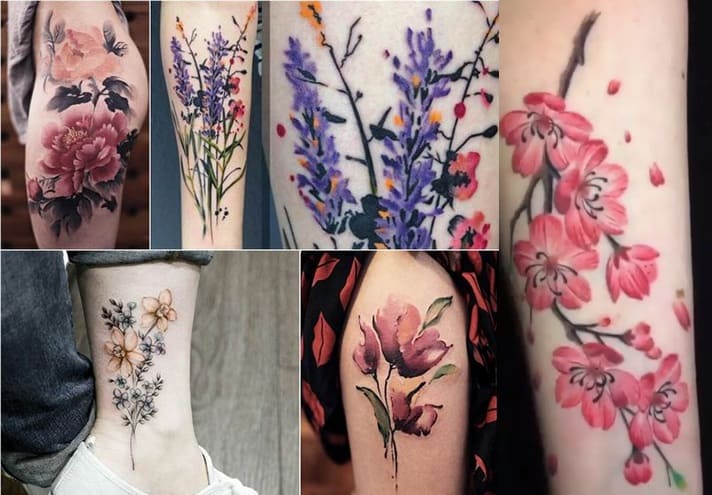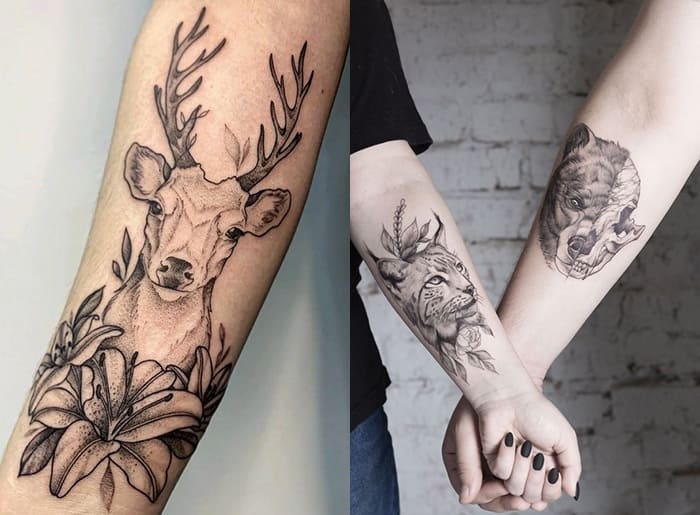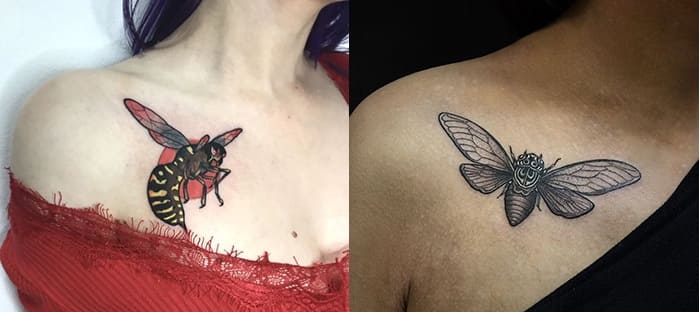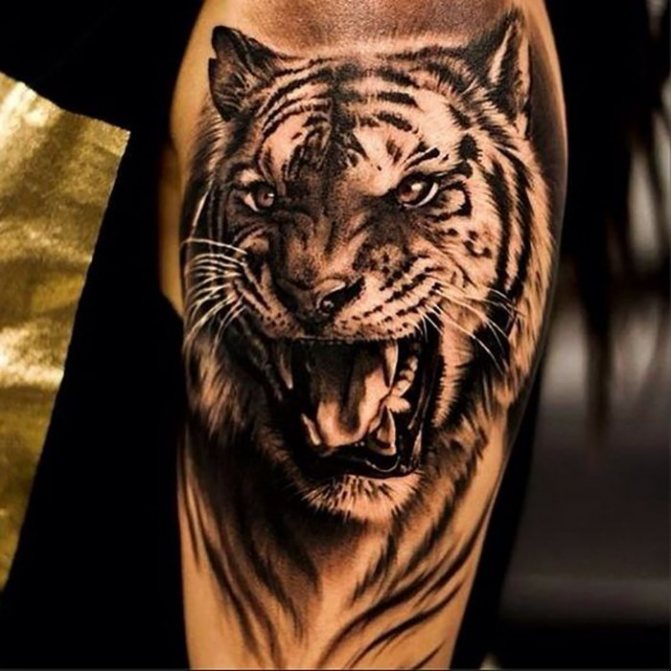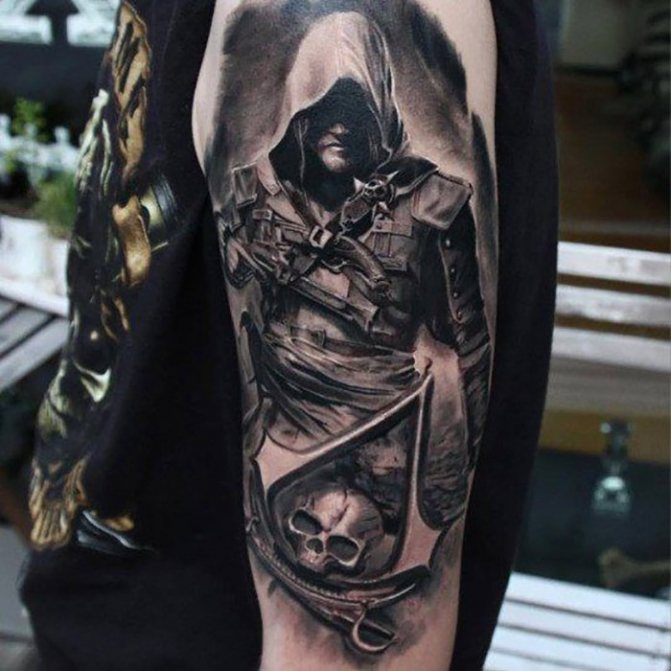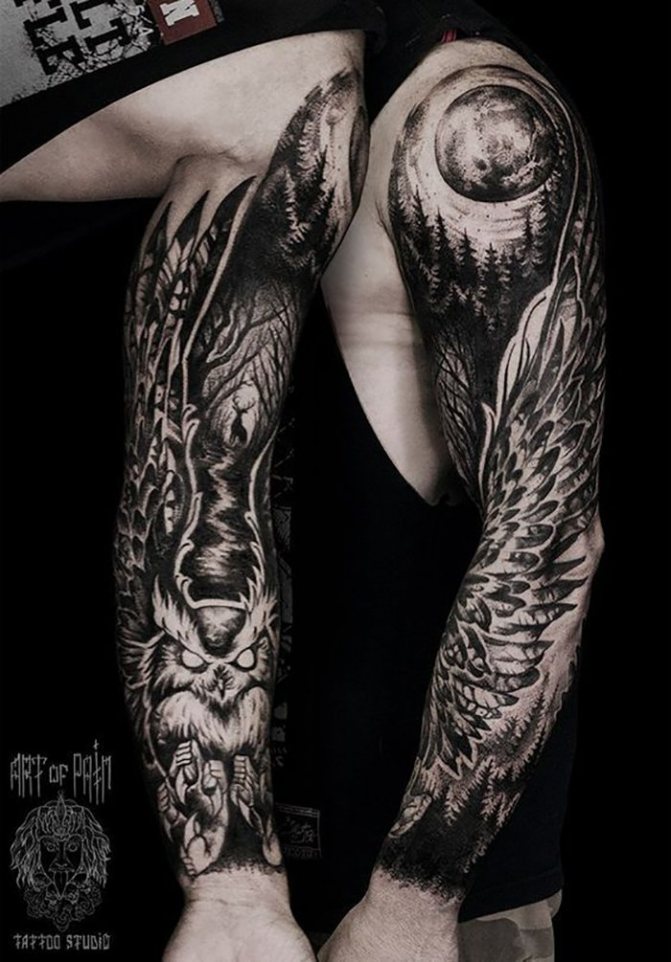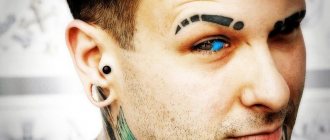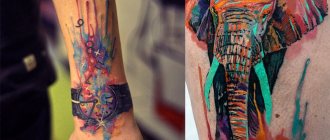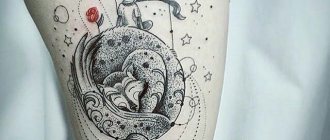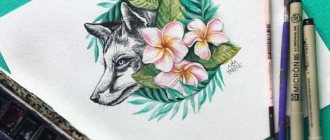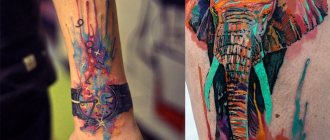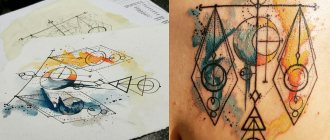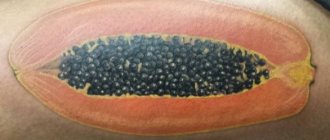How to choose a place for the application
Let's start with the fact that tattooing in any place is not allowed. To the forbidden belong palms and the place of bending of fingers, for a simple reason: the pigment there often does not take root, the tattoo becomes pale, there is a risk that several sessions are required, but even so no master can guarantee that this time she will stay with you. And the most unpleasant thing is that the pigment does not come out completely, but in parts. This is not a temporary tattoo, and if you want to get rid of it, you will have to remove it as well as all permanent tattoos - with a laser. This is done in a few steps. Besides, it's expensive and painful. Therefore even if you really want a tattoo in these places, it is necessary to weigh up the risks.

"Beginners" are often advised to choose the shoulder, the outer part of the elbow, the shin, or the lower back. The general assessment of sensation is not pain, but rather a slight discomfort.
Slightly more uncomfortable on the shoulder blades and outer part of the thigh.
But on the knees, elbows, ribs, neck and spine it hurts. Of course, this is relative and individual, to someone it is painless on the head, and the other will be unbearable on the shoulder. But these are rather exceptions.
Temporary tattoos
10. Alternative
Many people wonder if it is possible to get a tattoo for a year or two? Unfortunately, temporary tattoos do not exist in nature. A tattoo is a penetration of pigment under the skin, while a temporary tattoo is simply a drawing on the skin. There are several types of so-called temporary tattoos:
Body painting with henna (mendi, mehendi).
Mendi stains only the surface layer of the skin - the epithelium - with a natural dye. Drawings of henna can be safely called a tattoo for a month, because they hold with proper care for quite a long time.
Aerotatu.
Applied with a special device - airbrush, which sprays the paint on the body very realistic: the naked eye can not distinguish between this is a real tattoo or not. Silicone paint is used for airtattoo - such painting can last up to 1 week, then it is gradually washed off. This type of body art belongs to the category of washable tattoos.
Glitter Tattoo
. It is a drawing made with the help of glitter, which is fixed on the skin with a special glue. These bright and attractive glitter drawings can also be attributed to washable tattoos. They last for about 7 days.
11. Conclusion
Behind quite simple, at first glance, cosmetic tattooing procedure hides quite serious dangers. According to a study conducted by Contact Dermatitis experts, about 10% of people get an adverse reaction after their first tattoo: swelling that stays for weeks, skin disease, and increased sensitivity to the sun. Moreover, another 6% of new respondents reported long-term effects that no one could have predicted beforehand.
In any case, before getting a tattoo - think seven times. And if you can't make a final decision yet - better use a suitable alternative.
How many lasts a tattoo session
Each master works at his own pace. Speed is not an indicator of professionalism. One hammered a hand on a particular style, and will perform it faster, and the other unhurried and works through every detail, but the quality of the work in the end result they have the same. Nevertheless, going to get his first tattoo, a person is not yet familiar with the master and does not know his technique.
What factors influence the duration of a tattoo:
The size of the drawing. As a rule, the larger the sketch, the longer the session will last. For example, a realistic portrait, the size of a forearm, can last for 3 sessions of 5-6 hours each. Whereas geometrical small tattoo of 7*7 size will be ready in 2-3 hours.
Drawing Color. Color drawings, with the presence of shadows, shadows and transitions take significantly more time than a tattoo using only black color.
Complexity and the presence of small details. The more details, especially small in large numbers, the longer you will spend waiting for your long-awaited first tattoo.
Pain threshold. If you are in a lot of pain you have to take a break once every hour or a few hours. Or for example the session fell on stressful days, or menstruation, then the susceptibility to pain increases. Some people even get a temperature above 38 during the process. It's all very individual, and of course, this can impressively stretch out the session.
1) Don't drink alcohol before you are going to get a tattoo
You Must not drink alcohol Before you are going to get a tattoo. Despite the fact that no reputable or responsible tattoo artist would give a tattoo to someone who was, under the influence of alcohol, it is not a good idea for another reason either. Alcohol thins the blood and getting a tattoo will cause more bleeding on the skin.. This in turn will push the ink outward and The result will be a very pale and uneven tattoo .. Also, being under the influence of alcohol you may dull your sense of right choice and get a bad tattoo that you end up not liking.
When it is better to get a tattoo
It is not recommended to get a tattoo in the hot season. A tattoo is essentially an open wound. It should not be penetrated by sweat, dust and infections. In addition, the picture is beautiful only for the first 2-3 days, then it is covered with a crust and looks quite unsightly for about 3 weeks. Also, the sun's rays are detrimental to tattoos, not only fresh, but all tattoos in general.
The best time for the first tattoo is spring and fall. Winter is also suitable, but in winter because of the amount of clothing and friction, the healing period may be a little longer.
However, according to statistics, in the summer tattoos are imposed more often. If you decide to get a tattoo in the summer, try to choose cooler days and be prepared for proper care.
How to care for a tattoo at home we will tell at the end of the article.
Preparing to apply a tattoo
It is best to apply a tattoo in the winter. The first time after the procedure, the skin will burn, and this in the cool season can be endured almost without discomfort. In summer there is a lot of dust, and the risk of an inflammatory process joining is increased.
Before the session you should not take a hot bath, visit sauna, steam room, sunbathing. This can cause the secretion of blood during the session. Such procedures should not be performed after the tattoo as well, as it can provoke premature washout of ink from the image through the enlarged pores.
Blood thinners should not be used before the preparation. It is recommended to wear clothes that are spacious and comfortable enough for the master to work comfortably during the whole session. If you plan to get a tattoo on your leg, it is better to use shorts or a mid-length skirt.
One hour before the session it is recommended to eat, but not too densely. This will prevent the occurrence of possible dizziness. If your skin is too dry a week before the tattoo, it is recommended to use a moisturizer. Avoid sunburns. Apply sunscreen lotions and creams before going outdoors.
If the area of skin where the tattoo is planned to be applied is covered with hair, it is better to shave them on the day of visiting the tattoo salon. It is not recommended to remove the hair cover in advance because of the risk of inflammatory reaction.
Choice of sketch
Just type in a search engine request with a description of the drawing - not the best idea. Most of the time, you will find there not very high quality and outdated examples. A great option would be to make it to order from the future master, but this entails additional costs. There are many thematic groups in social networks with thousands of actual works, it will take time, but you will find what you need.
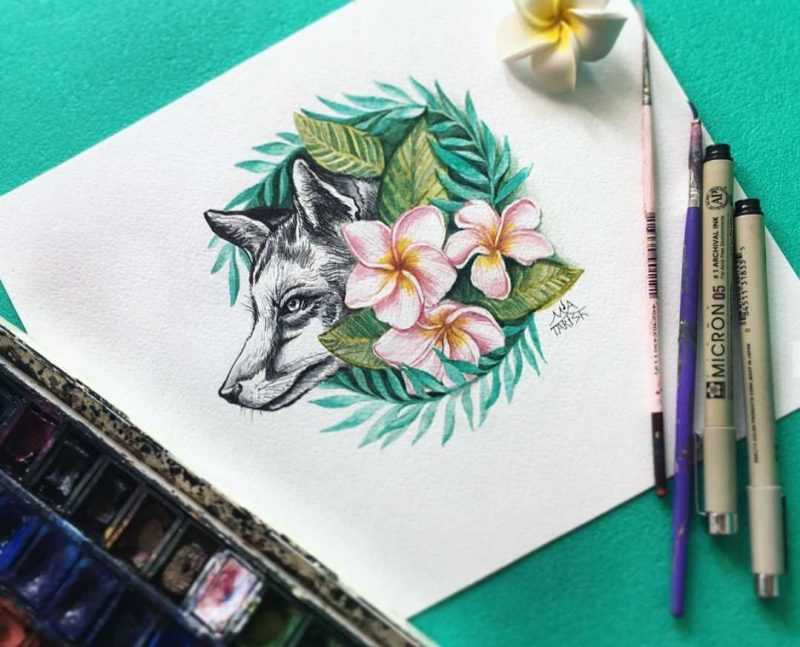

Don't rush to sign up right after a seemingly ready idea for a future drawing. The goal is not to enjoy the tattoo for one day, it is necessary that she did not get bored at least in the near future. Having chosen the sketch, put it off for several days, or better for weeks. If at the end of the term the desire has not disappeared, but only increased - feel free to sign up.
14) A tattoo master is not a doctor.
Go to the doctor if you think an infection has appeared. The ointments provided in tattoo parlors cannot cure infections, they can only help to prevent them. Although your tattoo artist can tell you how to take care of your tattoo and suggest the best way to care for it to prevent infection, if an infection does occur, only a doctor can help you. Don't hesitate to seek medical attentionIf you find yourself with any skin infection or other complication after getting a tattoo.
What master can be trusted and how to choose him
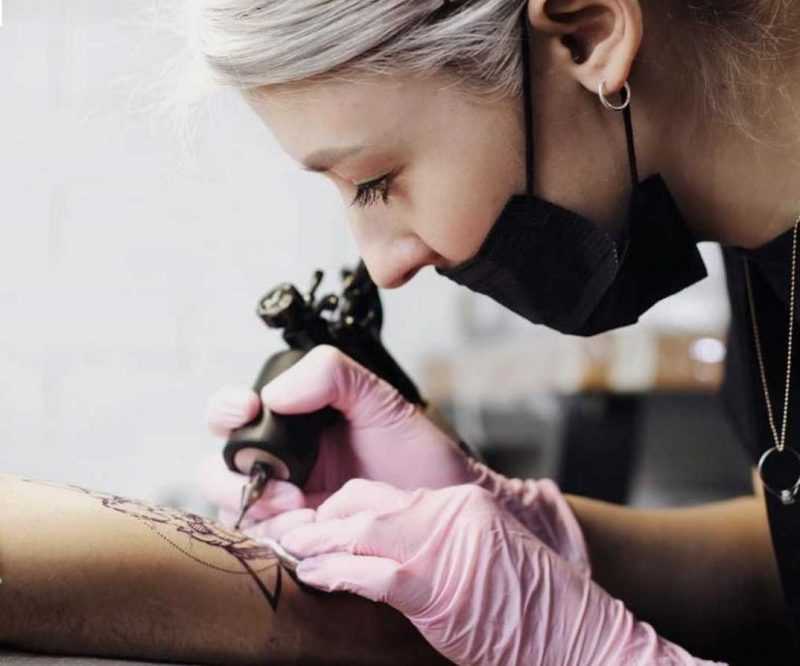

The first thing to ask is if disposable needles and supplies are used. A professional will not re-wipe the needle and use it on the next client. This is clear at first glance, but not everyone dares to elaborate. Do not hesitate to ask questions, it is your health and safety.
It is important to study the portfolio, and styles of work. The proportions should be respected, clear lines. Also pay attention to the presence of shadows and shadows, color combinations and brightness of the drawing. The portfolio should not have few examples, otherwise there is a chance to come across an intern with little experience.
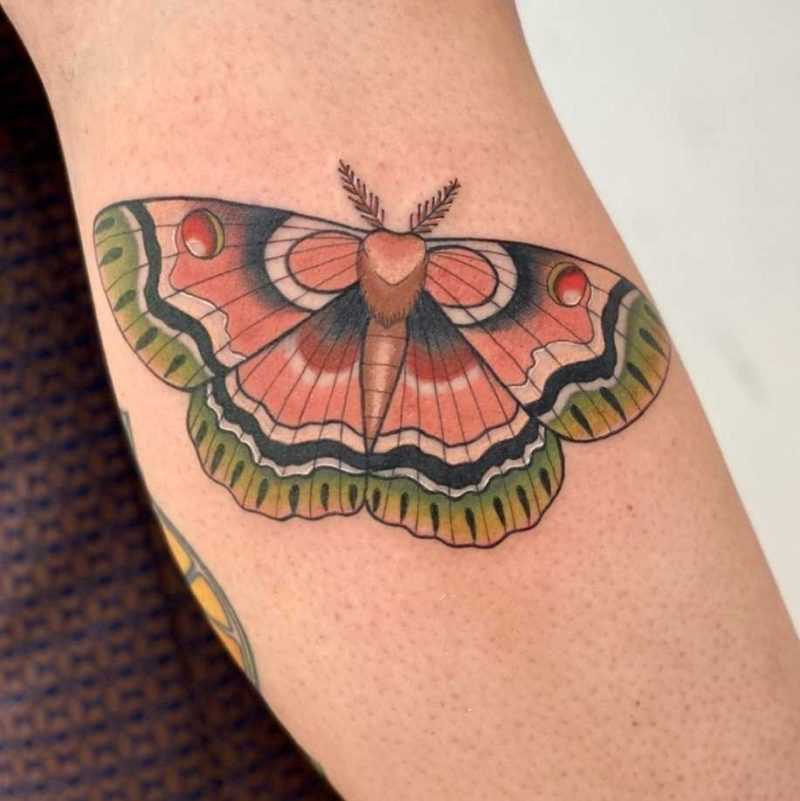

Last, but not least, a serious point: where the appointment is made. You should not consider "home" masters. It is difficult to observe the necessary steps of sterilization and disinfection in the apartment.
It makes sense to come for a consultation before the session. The master will give recommendations on composition and localization, and it is better to listen to them. An experienced tattooist will advise the area and size, taking into account the proportions and taste of the client.
What does a person without tattoos need to know before the session?
Dasha flyrania
First, that you need to go to a master you trust. This can be felt while you are arranging a session with him. If "contact" has occurred, there is nothing to worry about. You can ask all your questions before, during and after the session. Reliable master will answer you everything.
Second, keep in mind that a tattoo is painful. The degree depends a lot on the place and the pain threshold of the person. There are places that are comfortable for almost everyone: the outside of the arms (shoulder, forearm), legs (calves, thighs). The inner parts of the extremities are more "painful." The heaviest are the ribs, abdomen, chest, neck, and fingers. And for most people it is unpleasant to be hit on the bones.
Third, you should know that the process takes time. The length of the session and healing depends on many factors: complexity, size of the sketch and where it is applied. For example, a simple sketch is twice as fast on the hand than on the ribs. Skin is different everywhere. Somewhere it is rougher, somewhere it has many folds, somewhere it is more delicate and thinner.
One last thing. Tattooing is safe, but under a number of conditions. You must not have any medical contraindications. For example, bad blood clotting, HIV, epilepsy, pregnancy. The place where you score should be clean, and the supplies should be disposable. Make sure before your session that the studio is sterile and the handyman has installed a new needle. And be sure to follow healing guidelines to avoid infections.
How to take care of your tattoo in the first days after the session
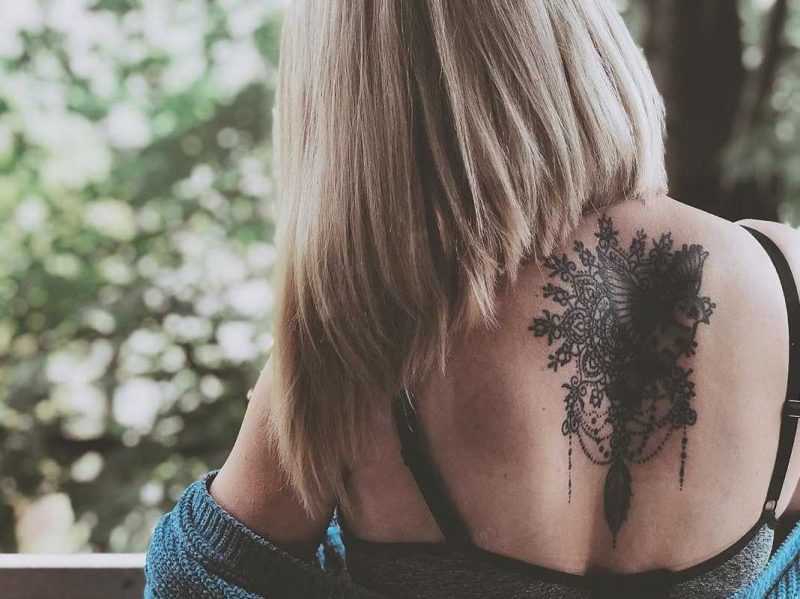

Immediately after the session, the master will apply a healing ointment, and wrap the tattoo with a transparent film. It should be removed in 4-6 hours (maximum 12 hours) and the tattoo should be carefully washed with soap and water under warm running water. Then apply the healing ointment or a special film, depending on what the master advises you to use.
During the first 3 days of washing and smearing the tattoo is necessary with a frequency of 4-5 times a day, there may be itching, you need to be patient.
On the 4th-14th day a crust will begin to form that promotes healing and protects the tattoo. The amount of ointment can be reduced to 2-3 times a day.
After 2 weeks, the ointment can be removed, but be sure to moisten the tattoo until it is completely healed.
How do I know that I will not get tired of this drawing?
Zlata Ziva
Tattoo artist, experience 2.5 years, works in Moscow. Beats color abstract tattoos based on her own sketches.
First of all, the picture you choose must be 100% responsive. Secondly, the tattoo is so fused with the body that it is usually perceived as part of it. And just as we can't get tired of our own hands, we can't get tired of the image.
But if you don't like the image, that's okay. Our tastes change over time. You can accept yourself with all your decisions, right and wrong. Or, as a last resort, get rid of the tattoo. This can be done in two ways. The first is to cover the drawing with another design. This will be especially convenient to do with a small tattoo. The second: get it out. But keep in mind that this is a time-consuming and expensive procedure. In any case, a discontented tattoo is not a verdict.
During the session
Often people come to the session with friends, lovers, relatives. So that they provide moral support. Such presence often distracts the master, prevents him from concentrating. That is why most tattoo artists do not like it when the whole company comes to the session. Agree in advance on the presence of third parties with the tattooist.


During the session do not distract the masterа. It is clear that you are worried, trying to distract. Talking can interfere with the process. Of course, if the master himself likes to talk (and it does not bother him), then why not?
It is good to distract from pain by watching an interesting film or listening to music. Therefore it is possible to take a laptop or tablet for a session (in consultation with the master). Where you can download the necessary content in advance. It is better to charge your cell phone 100%, because from nothing to do in the session you will often and for a long time sit in it.
If the master suggests before or during the session to make any adjustments to the sketch, or the place of its application (for example, a little to the left, or a little lower than you wanted)then agree with him. An experienced tattooist from the side is more visible HOW your "tattoo" will look. Trust his opinion.
We wish you good luck with choosing your first tattoo!
Tattoo with floral motifs
View this post on Instagram
Publication from High Voltage Tattoo (@highvoltagetat) on July 18, 2020 at 10:27 am PDT
View this post on Instagram
Publication from winterstone (@winterstone) on 11 Oct 2021 at 11:00 am PDT
Tattoos with floral motifs best accentuate femininity and sensuality. However, bold designs in the form of roses with spikes are no longer as relevant as neat minimalist tattoos in the form of wildflowers.
Feather-shaped tattoo
View this post on Instagram
Posting from Doctor Woo (@_dr_woo_) on May 14, 2021 at 2:01 a.m. PDT
Nowadays tattoos in the form of a feather are not rare, but few people know that the ancient Indian tribes were the first to apply such patterns. And to decorate their bodies with a drawing in the form of a feather could only selected members of the community - a feather is considered a symbol of rebirth of life, spirituality and lightness. Celebrity tattoo artist Dr. Woo, who creates designs for Hailey and Justin Bieber, suggests rethinking the classic design.
What should you be prepared for after a tattoo?
Zlata Ziva.
A tattoo needs time to heal. Recommendations for care depend on the master and his work. How much the tattoo traumatized the skin, how abundantly it is stained, what size. It's pretty easy to heal now, because masters often use special films. Nothing grandiose will have to be done.
But it is necessary to be ready to take care of the tattoo for some time. As a rule, on the first day the place with a tattoo hurts, and then the unpleasant sensations disappear. For the time of healing one cannot go to the bath, sauna, solarium, lie in the bath, steam the skin, mechanically traumatize. The tattoo may peel, itch, and secrete fluid, blood, and blood. This is normal. After healing, you do not need to care for it permanently, but you can use cream. On moistened skin, the image looks better and brighter.
After a considerable period of time, about a year, any tattoo loses its saturation. Colored tattoos are less contrasty than black tattoos, so the weakening of hue is more noticeable. Tattoos also become softer in outline. Sometimes people worry that the design may blur, but this only happens if it is applied incorrectly.
A blog about tattoos and tattoo culture
Tattoos have always fascinated us. А The first tattoo is always special.. And there are a lot of emotions, thoughts and questions before getting one. You may be concerned about how much it hurts, whether you have chosen a good sketch, whether you have enough money for the idea you have in mind.
Let us help you relax with our guide on what you need to know before your first visit to a tattoo artist.
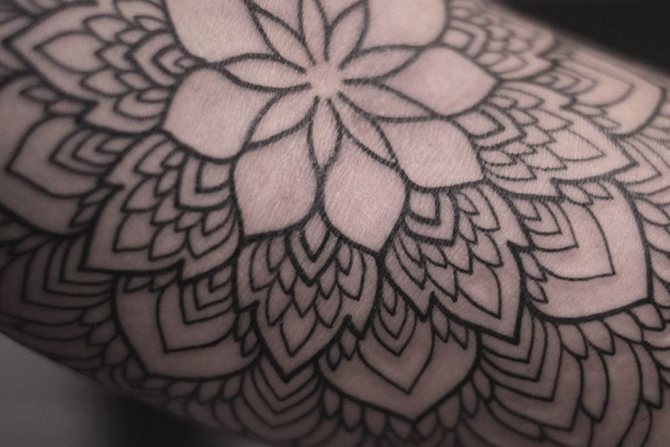

The master is Sasha Masiuk.
Take your time!
We understand that when you already have the thought of a new tattoo, you want to pick up the phone as quickly as possible and make an appointment with the master. But if you are doing it for the first time, we still advise to pull yourself together and think it over.. Your awareness - the key to a quality first tattoo that will delight you for a lifetime.
Explore styles
A tattoo will be a part of your body for life, so take the time to research tattoo styles. This will be especially important when choosing a master, as good masters usually work in 1-2 styles.
Here are some of the key tattoo styles:
Traditional (English "traditional") is a style that sailors used to score in their day. They also made it popular. This style is characterized by crisp bold black outlines and a simple color palette. Elements of such tattoos are usually skulls, roses, ships, anchors and portraits of girls.
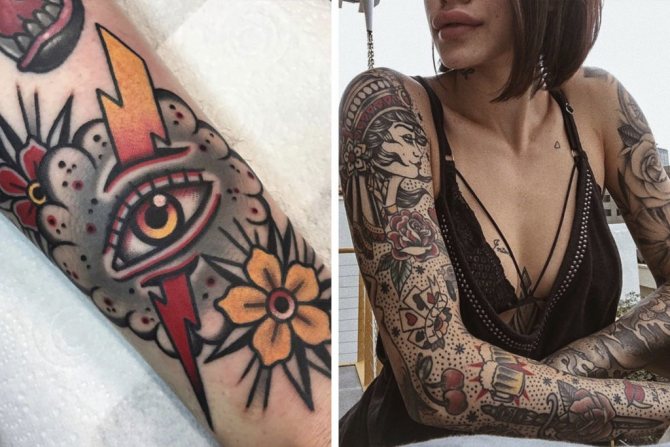

On the left is Debbie Jones, England.
Realism (As the name implies, this style of tattoo uses shadow, contrast and light to recreate reality on the skin. The designs of these tattoos are very diverse. Portraits of celebrities, images from movies, photographs, flowers, animals, paintings ...
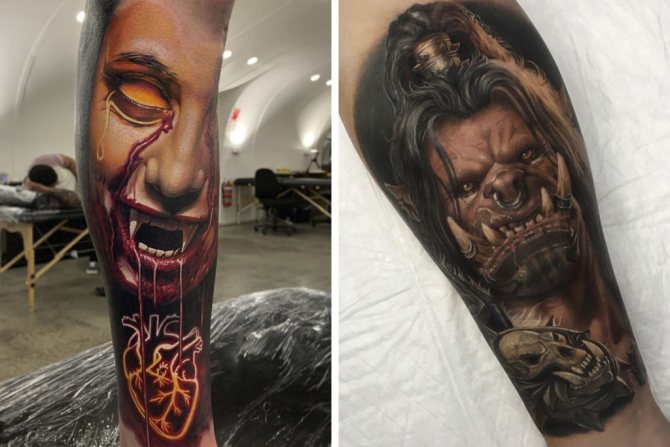

On the left is Ben Kaye. On the right - Irina Loktionova, Rostov-on-Don.
Japan (English. "japanese") is one of the oldest styles of tattooing that originated almost 5,000 years ago. It resembles illustrations from traditional Japanese works of art and often includes mythical scenes and folklore. The subjects of these tattoos are beautiful landscapes, samurai battles, mystical ghosts, majestic dragons and other traditional Japanese elements.
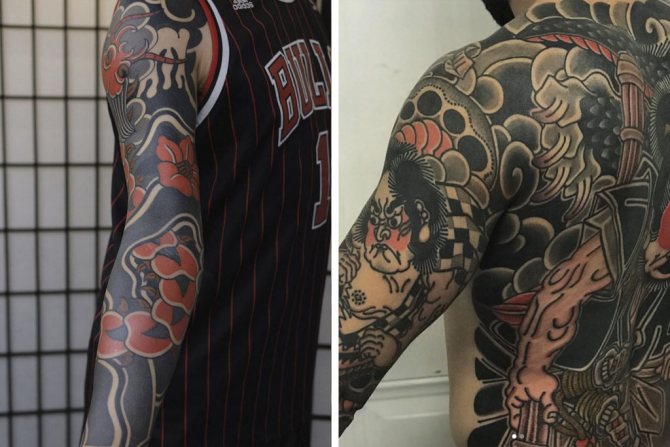

On the left is Horisumu. On the right is Koji Ichimaru.
Tribal (English "tribal") - a style originated in Polynesian culture in ancient times. Such tattoos are considered the oldest form of tattoo art. The work in this style is performed mostly in black paint and usually consists of clear lines, dots and abstract shapes. Symbolism is key in this style because it's what defines the meaning of the elements.
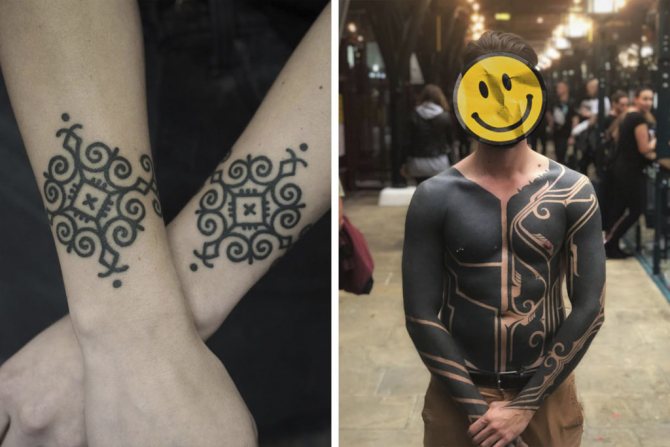

On the left is Daria Sharova, St. Petersburg. On the right is Hanumatra Lamara.
New Style (English. "The new-school style emerged back in the 1970s and was influenced by some features of traditional American tattooing and contemporary pop culture. Bold sharp outlines, bright colors, recognizable characters, cartoon concepts, and rounded shapes are part of this style.
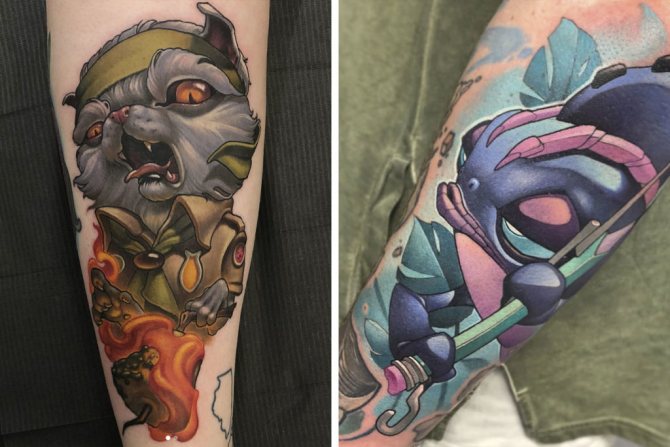

On the left is Lindsay Baker. On the right is Jamie Ris.
Graphic (Graphic is a rather young style that combines minimalism, linework and Dotwork. The main component of this style is geometry. Most often these are black and white tattoos, but sometimes masters can diversify the lines and make them colored. Ideal for those who want to get their first tattoo, because the work in this style is less painful.
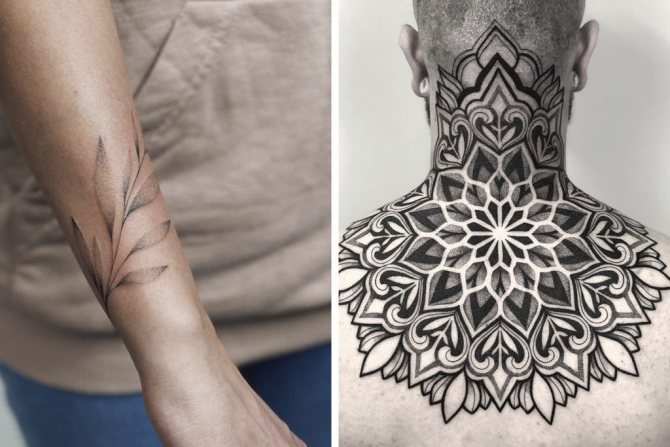

On the left is Alina Tu, Moscow. On the right - Raimundo Ramírez, Spain.
Information about each style of tattoo is difficult to fit into a few sentences, so our site has a separate rubric in which you can Read more about each of them.
Even if you don't want to dive headfirst into each style, you should have at least a minimal idea of what tattoos in a certain style.Otherwise, it will be very difficult for you to find the right master.
Tattoo design
While you are sitting on the internet looking for a sketch for your first tattoo Save your favorite designs. This will help you create the mood-board you need to clearly describe the tattoo you want. Your master will use this information to create a custom sketch.
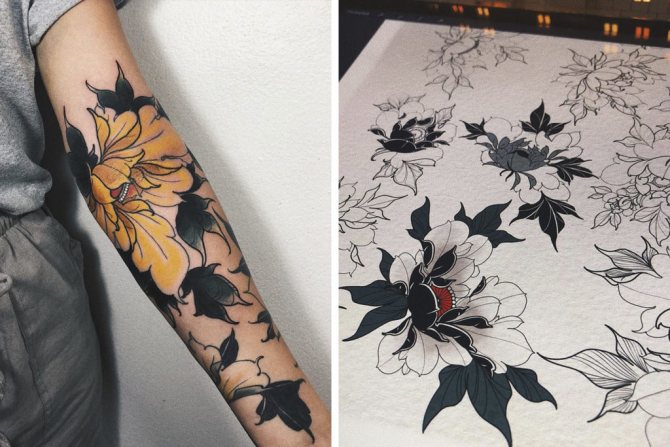

Work and tattoo flashy master under the nickname Ninteendo, St. Petersburg.
We remind you that we We do not advise you to impose on a tattoo by the ready sketch from the Internet. Much better to draw your own tattoo design that will be just yours and will be closest to you.
Choice of color
Although the style of the tattoo often sets the color palette, craftsmen can modify the design and style to be more in line with your desires. However, your skin tone also plays a big role in how well the individual colors will hold up.
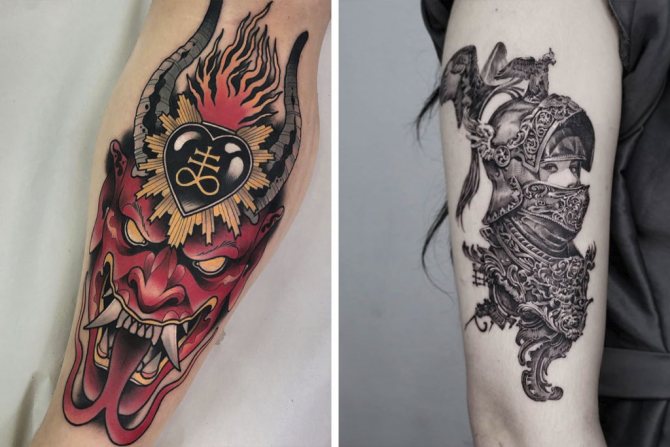

On the left is a colored tattoo by Kike Esteras, Spain. On the right is a black and white work by master Hwi, Korea.
For example, on light skin, pastel colors, yellow and green pigment shades work best. And on dark skin - bright colors, red and blue pigment. But this doesn't meanthat you can't get the shade you want in either case, just that some colors won't look as pigmented.
This only applies to colored tattoos. The black paint is equally good on any skin with only minimal differences. Here everything will already depend on the quality of the pigment application.
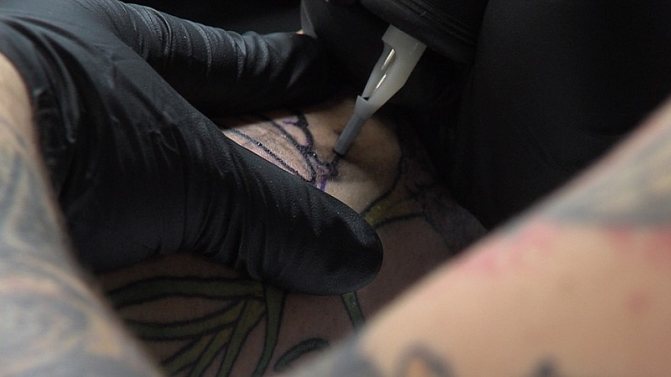

And don't forget, all colors, including black, burn out over time. This is a natural process, because your skin renews itself. Don't worry, even if your tattoo becomes paler than you would like, you can always update it.
Tattoo size and placement
Not only can tattoos fade over time, but their outline can also blur. This will depend on the location and size of the tattoo. Therefore, It is very important to think about where you want the tattoo and how visible you want it to be.
When choosing, you can either be guided by the location or by the sketch you choose. In either case, your master will help you decide, weigh the pros and cons, and warn you about possible pain.
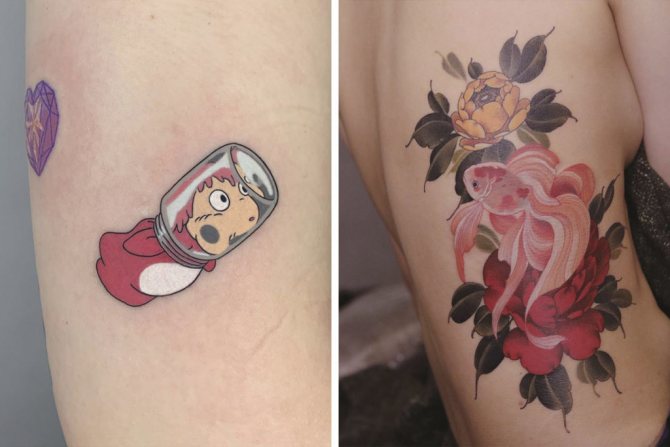

On the left is a small hand tattoo by the master under the nickname tattooist_pooh. On the right is a large rib tattoo by Kubrick Ho.
Yes, this is going to hurt. It hurts the most where there are more nerve endings and less fat. But, if you have a high pain threshold, you might not even feel anything. Especially if you choose a less painful place, like your biceps or thigh.
The most painful places for tattoos are usually: forehead, neck, spine, ribs, hands and fingers, ankles, upper legs.
Choosing a master
If you already know what you want, consider this a sign that You are ready to take the next step.: Choose a master and make an appointment. You have several options. One is to ask your battered friends where they had their tattoos done and were happy with the result.
Or you can find a tattoo master yourself on social media. Most artisans have their Instagram these days, and it's a great way to get to know their work. But here's what you should keep in mind when looking at your options:
1. Make sure the artisan or tattoo studio has a license
Licensing documents should be on the website or on the walls of the salon. We understand that many salons or craftsmen work without them, in which case the responsibility for the choice will be on you.
2. Observance of all sanitary norms.
In good tattoo salons perfect cleanliness, immaculate workplaces and washed floors. If the salon is an unpleasant smell - you can safely turn around and leave.
Tattoo-masters must necessarily (!) use disposable supplies. These include needles and spouts, paint caps, protective film on wires, power unit and tattoo machine. The place where you will be sitting should be treated with disinfectant and wrapped in plastic wrap.
This is to avoid cross contamination. This also applies to gloves, razors, wipes - everything the handyman will use must be new.
3. Read the reviews about the master or the salon.
And last, but not least: pay attention to the overall professionalism and personality of the master. You're going to trust him with a part of you, and to do that, you have to feel comfortable.
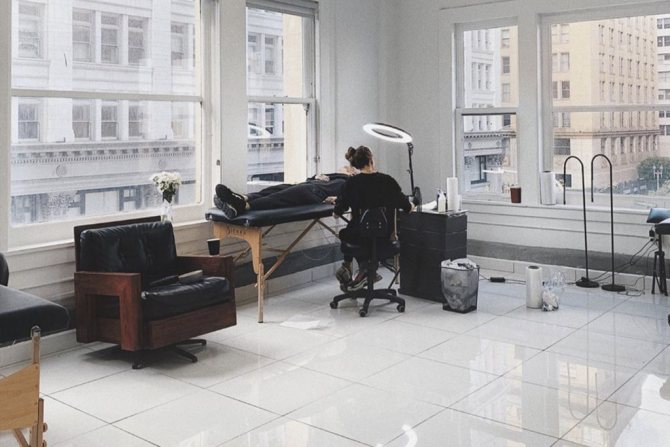

Tattoo artist Sasha Masok at work.
If after the consultation you don't feel comfortable and are still unsure, it is more than okay to go to another master. Just be sure to thank the tattooist for his time. Or pay for his consultation, provided that you have discussed this in advance.
If you are sure in the master and everything is agreed with him - feel free to book a session!
How much does it cost to get a tattoo?
There are several options for paying for a tattoo session. The first of them is hourly rate or the price per session, which usually lasts 3-4 hours. The more complicated the tattoo, the longer it takes to do it, and the more it will cost. The cost of one hour of the master's work depends on his professionalism and experience. In Russia this figure ranges from 4000 to 7000 rubles.
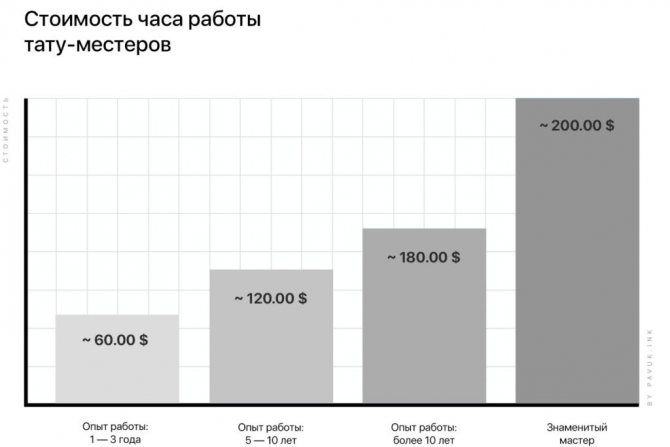

In this case, the size or location of the application does not play such an important role. Because it directly affects the time, and therefore the cost.
If you want a small tattoo, on which the master will spend 30 minutes of his time, you will still have to pay for an hour of work, as this is the minimum price.
Another option is if the master tells you the price directly for the tattoo.. Each tattoo is unique. Therefore, the price will depend on a number of factors. The size here matters more than with an hourly fee and is one of the deciding points. The bigger the tattoo, the more expensive.
The second factor is the complexity of the design. The more detail you want to add to your design, the more time it will take to complete, which increases the cost. Simply put - simpler tattoos = lower price, complex tattoos = higher price. We want to note that free flashes (tattoo sketches) of salon masters usually cost cheaper than the development of an individual sketch.
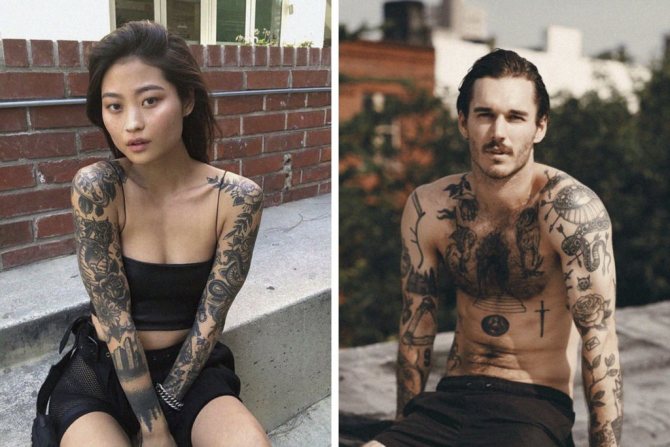

And the third factor is the place of tattooing. There are areas that are harder to tattoo, the skin there is thicker or softer than usual. All this also affects the time. The master will take into account the placement, telling you the price, but it is not a significant factor that will greatly affect the cost.
Don't be greedy. Good craftsmen always price their work fairly. You pay them for their professionalism, experience, responsibility and time. If you weren't prepared for the quoted price, but really want to get a tattoo from the chosen master, you'd better be patient and save up a little more.
Before the session:
Mentally tune in. Yes, it will hurt a little, but most often after half an hour the skin begins to get used to it and it becomes easier. You may bleed, but remember that it is a natural process.
Wear comfortable loose clothing. Depending on where the tattoo will be, you should wear clothes that allow you to easily reach that part of your body. For example, if you are going to get a tattoo on your leg, do not wear tight jeans. Also, it is not advisable to have a fresh tattoo rubbing against your clothes after the session.
Adhere to the recommendations. Do not consume alcohol, drugs, pills, coffee or fatty foods. They contribute to blood thinning, which will cause more blood to be released in the process. This will make both you and your handyman uncomfortable.
Eat a hearty meal before your session. This will help to avoid unconsciousness and alleviate the pain of the tattoo machine on your skin. Also, eating will give you energy and stamina. And if you're expecting a long session, take a snack with you, like a candy bar.
Prepare the skin at the application site. It is important not to traumatize it with burns. The heat will provoke sweating. It is also not a good idea to shave the area prematurely. The tattoo artist will do it just before the session so that the irritation will be minimal.
Relax! It should be a pleasant process and a memorable moment. Enjoy it.
After the tattoo session
This is an important step that will determine The quality of the healed tattoo. After the master finishes his work, he will treat the tattoo with an ointment or special cream and wrap it with cling film (professional or regular food). And will give you advice on how to care for the tattoo after the session.
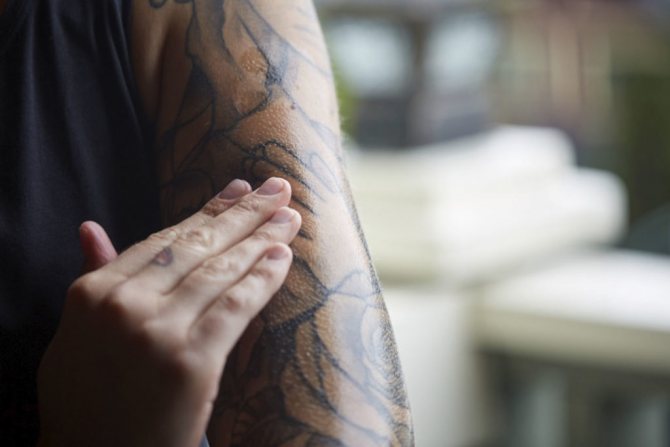

Tattoo care in the first days. Usually, the bandage after the session is removed in 5-6 hours. After you have done so, wash the tattoo with warm water and soap and blot dry with a paper towel. It is worth avoiding soap with fragrance or alcohol, otherwise it will cause irritation. Then apply a special cream, it can be a professional cream, petroleum jelly, "Bepanten" ointment, "Panthenol" or moisturizer. And again, wrap the tattoo in foil.
Such a procedure should be repeated every 5-6 hours for 4-7 days. This will depend on how quickly your skin regenerates. Remember, a fresh tattoo is an open wound, so it is worth treating it with clean hands so as not to bring infection and not to damage the tattoo.
You can read more about tattoo care in our article.
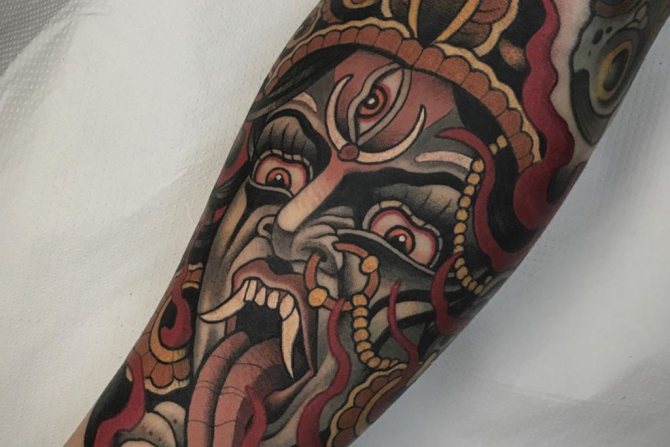

Master Alvaro Alonso, Barcelona.
Now you're ready!
If you've read our guide, consider that you've gained Your basic knowledge of tattooing.. Now you know what styles of tattoos there are and how they differ, where it is more painful to beat a tattoo and taking into consideration what factors masters name a cost of a tattoo.
We hope we've helped you add to your knowledge, set the record straight, and get brave before getting your first tattoo.


